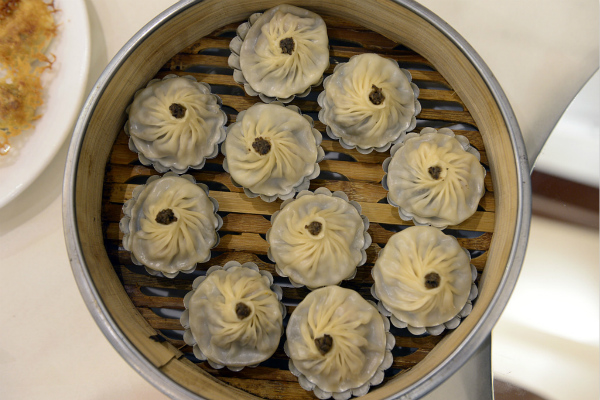Hangzhou steamed buns prove popular in Tibet

Hangzhou steamed buns [Photo/VCG]
As Shang Wangli tied an apron on and got down to work, much of the city was still fast asleep.
Running a small restaurant named "Hangzhou Steamed Buns" in Lhasa, capital of Southwest China's Tibet autonomous region, Shang and her husband have found not only comfort in nostalgia, but also the promise of a prosperous future.
The couple came to Lhasa about two years ago from the city of Shengzhou in East China's Zhejiang province, bringing the famous Hangzhou snack -- steamed stuffed buns -- to people living on the Qinghai-Tibet Plateau.
The popular east-coast snack remains a niche product in Lhasa, where Tibetan and Sichuan cuisines dominate the dining tables. The couple saw this as a potential business opportunity, albeit thousands of miles away from home.
"In my hometown, steamed buns are just breakfast food," Shang said. "But in Lhasa, they are also eaten for lunch and dinner, and our restaurant can stay open until late at night."
To keep costs under control, Shang did not hire any employees at her family-run restaurant. The couple did everything themselves, from purchasing ingredients and cooking to the dine-in service.
"Sometimes we would take shifts when one of us was tired out. It's no easy task to start a business, and we have to be hard-working," she said.
Steam buns are traditionally cooked in bamboo steamers, but the lower atmospheric pressure in Lhasa -- which lies at an elevation of 3,600 meters -- makes this difficult, because water boils at a lower temperature.
Therefore, the couple used a pressure cooker to steam the buns, which brought a special new taste to the Zhejiang cuisine.
"Buns made in a pressure cooker have soft and fluffy skins, as well as tender and tasty meat fillings," said a Sichuan customer who was visiting Lhasa.
The couple also provided free hot water, Wi-Fi coverage and a neat and tidy dining environment at their tiny restaurant, which has gradually attracted many regular customers from the neighborhood.
It took Shang some time to communicate properly with some of the older local inhabitants who could not understand Mandarin. Nonetheless, she was always patient in providing information on the menu, sometimes using pictures or even body language.
"To be frank, before we came to Lhasa, we used to have plenty to be anxious and uncertain about," Shang recalled.
However, she found life in Lhasa is just as convenient as in other places, and it is not hard for non-locals to get set up. "Now there are more people from my hometown who come here to do business."
Tibet has been improving its transportation infrastructure, logistics and business environment in recent years, providing more opportunities for new settlers like Shang in catering, retail and tourism businesses.
"Our business is quite good. We can earn up to 30,000 yuan (about $4,563) a month now," Shang said. "We're not actually dreaming big; our goal is just to put away some money to provide for ourselves and our kid."
Shang turned on the lights, opened the door and went back to her small kitchen. There, she busily prepared more steamed buns, in good time for her first customers of the morning.
-
Visionary Pathway - Hangzhou Playbook
July 15, 2025



